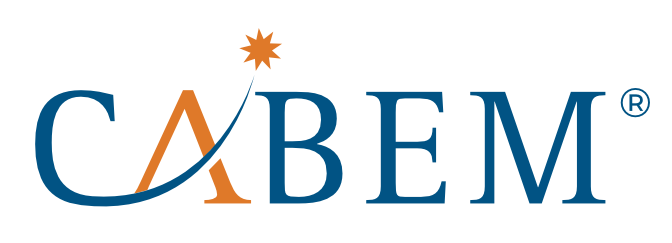Abilities Are the Bedrock of Competency Management
We live in a competency-driven economy, and organizations can no longer afford to guess what their workforce is capable of. That’s where competency management comes in—a structured approach to defining, assessing, and developing the capabilities employees need to perform effectively.
Competency can be defined as the combination of knowledge, skills, abilities, behaviors, and certifications required to perform a particular task, function, or role effectively. It encompasses both the theoretical understanding and the practical application of that knowledge in a given context. Competency implies proficiency or excellence in a specific area. It is often demonstrated through consistent and successful performance.
By mastering and demonstrating these five core categories of competency—knowledge, skills, abilities, behaviors, and certifications or credentials—managers can effectively lead their teams and contribute to the success of their organizations across various industries. Competency management software is invaluable in this journey, enabling managers to identify strengths, address gaps, and continually develop their capabilities. Embracing these categories ensures that managers are effective leaders and catalysts for organizational growth and innovation.
While competency management includes various categories, abilities are the engine that powers them all. In this blog, we’ll break down the five essential categories of competency management and explain why abilities are the cornerstone of a truly effective system.
Knowledge is the Foundation of Understanding
Knowledge encompasses the theoretical and factual information that employees need to perform their roles effectively. This can include industry regulations, company procedures, product details, and domain-specific concepts.
But knowledge is inert without application. It’s the ability to recall, comprehend, analyze, and synthesize knowledge that determines whether it can be leveraged meaningfully. A marketing professional might understand SEO theory, but it’s their cognitive agility and critical thinking ability that allows them to translate that knowledge into an effective campaign strategy.
Abilities empower knowledge to become action.
Skills are the Tools for Execution
Skills are task-specific proficiencies—both technical (e.g., coding, budgeting, data analysis) and soft (e.g., negotiation, time management, public speaking). These are acquired through education, repetition, and practice.
However, the development and transferability of skills are governed by underlying abilities. Someone with high problem-solving ability will more quickly master new tools, and someone with strong adaptability will more easily apply a skill in different contexts.
Abilities accelerate skill acquisition and broaden their relevance.

Abilities are the intrinsic or developed traits that support learning, performance, and adaptability across all other competency domains. These include cognitive abilities (such as reasoning and memory), emotional abilities (like empathy and resilience), and physical or psychomotor abilities, where relevant.
Abilities are unique because they are both enablers and amplifiers. They affect how quickly someone can learn a new skill, how well they can apply their knowledge, how consistently they demonstrate effective behavior, and even how prepared they are to earn credentials.
Without well-developed abilities, competency management becomes rigid and unsustainable in fast-changing environments.
Abilities make every other category more potent and future-ready.
Behaviors are the Culture Carriers
Behaviors refer to the observable actions and attitudes that employees bring to the workplace. They reflect how individuals collaborate, solve problems, respond to feedback, and align with company values.
Positive behaviors—such as dependability, inclusiveness, and integrity—often stem from strong emotional and interpersonal skills. For example, the ability to regulate emotions contributes to professionalism under pressure, while social intelligence fosters stronger teamwork.
Behavioral competencies are not simply about policies—they’re about people.
People’s abilities drive their behaviors.
Certifications & Credentials are the Formal Proof
Certifications and credentials provide formal validation of an individual’s qualifications. These may be required for regulatory compliance, industry recognition, or internal promotion.
However, obtaining and retaining certifications requires more than studying—it demands initiative, persistence, learning ability, and sometimes critical thinking during testing or real-world application. Two candidates may hold the same certification, but the one with stronger abilities will apply that certification more effectively and evolve faster in their role.
Abilities determine the real-world value of a credential.
Why Abilities Deserve Center Stage
Organizations can no longer rely solely on credentials, technical skills, or static knowledge bases. What separates high performers from average ones is how well they learn, adapt, collaborate, and grow—all of which are driven by core abilities. When businesses prioritize abilities in hiring, training, and performance evaluation, they’re not just preparing for today—they’re building resilience for tomorrow.
Competency management systems that place abilities at the center become more flexible, scalable, and aligned with human potential. Whether you’re developing job profiles, planning training programs, or evaluating performance, start by asking: Do we understand and cultivate the abilities behind the outcomes?
When abilities thrive, knowledge becomes insight, skills become second nature, behaviors become consistent, and credentials become more meaningful. At CABEM, our Competency Manager software systematically compiles and builds competencies that capture and institutionalize knowledge, ensuring a comprehensive understanding of organizational capabilities. We’ve found that many training programs are siloed, lacking a comprehensive approach aligned with organizational goals. Our platform enables businesses to develop and align competencies with various organizational segments, including departments, roles, locations, and other relevant areas. Contact us today to get started.

